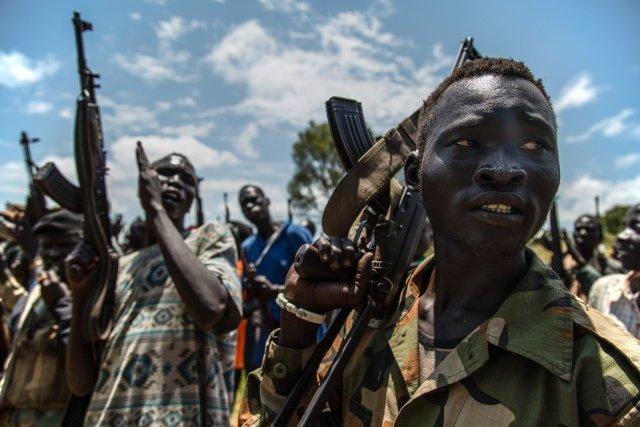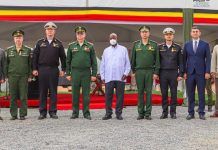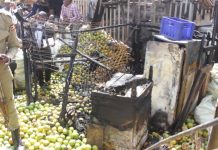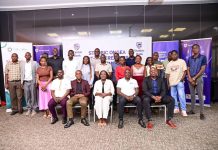By Faridah N Kulumba
Africa-Press – Uganda. About 250 Ugandan men and a few women who in the past conscripted into rebel activities in South Sudan last week handed themselves to Uganda People’s Forces (UPDF) 4th Division.
The returnees
The men and women had in the past recruited into rebel groups. Including the National Salvation Front (NAS), the South Sudan People’s Liberation Movement Army in Opposition (SPLM-IO), and others to fight against the South Sudan government.
Also among the returnees were some Ugandan youths who were allegedly recruited as rebels to fight the South Sudanese government. They surrendered afterlife became difficult in the jungle. The youths were allegedly recruited into SPLM-IO and NAS.
However, the latest military programme that the South Sudan government undertook has seen several armed rebel groups get integrated into the national (South Sudan People’s Defence Forces) army rendering foreign nationals, including Ugandans, who were fighting for them redundant.
Tightening security in Uganda
After Ugandan rebels in South Sudan surrendered Uganda tightened its intelligence network to monitor and guard against the possibility that returnees could hide weapons and cause instability in future. According to Brig Bamwiseki, those who surrendered were very many, so tightening security was necessary in order to prevent those rebels who planning to hide the guns they came with and use them later to commit crimes like highway robbery and other crimes.
Brig Bamwiseki added that many guns have been recovered by UPDF in the months they have been returning. The UPDF 4th Division Intelligence Officer, Lt Col Micheal Opio Ocuka, confirmed this information when he revealed that in October alone the army recovered ten guns.
Safe return strategies
The UPDF army last week set a meeting with their South Sudan counterparts at the UPDF 4th headquarters in Gulu City to discuss how all the Ugandan defectors can be given good and free passages for them to return safely. This will be done by Uganda clearing its border of rebels.
Uganda and South Sudan agreement to fight rebels
Uganda People’s Defence Forces (UPDF) and the South Sudan People’s Defence Forces (SSPDF) on 6th August 2022, agreed to form structures and share intelligence information on South Sudan rebels alleged to be hiding in Uganda disguised as refugees
During the meeting that took place at the UPDF 4th Division Headquarters in Gulu City, Uganda was represented by Gen Wilson Mbadi, the UPDF Chief of Defence Forces, whereas Lt Gen James Koang Chuol, the SSPDF Deputy Chief of Defence Forces in charge of training and research represented South Sudan.
The agreement
In the agreement signed between the two countries, UPDF and SSPDF will also share intelligence information on the Uganda National People’s Liberation Armed Forces (UNPLAF) assumed to be operating in South Sudan and dissidents of the National Salvation Army hiding in Uganda. The agreement comes following the spillover of the UNPLAF and the National Salvation Army activities into Uganda and South Sudan.
Imputations
According to the SSPDF authorities, some Ugandans cross to South Sudan by disguising themselves as business people but with the intention of joining the National Salvation Army. When they encounter resistance, then they flee and hide in Uganda disguising themselves as refugees.
Objectives of the joint operation
The two nations agreed to work together to make sure whatever insecurity affecting them will be dealt with through sharing of information. Where it is necessary the two armies will join forces against the negative groups and also be strict on the refugee influx. The SSPDF will work with the UPDF to ensure that rebels disturbing the peace at the border are defeated.
Strengthening ties.
Lt, Gen Chuol explained that the two neighbouring countries reaching this significant stage of willingness to solve the problems of their borders will end border conflicts between the two nations. Uganda says the two countries were looking forward to having a memorandum of understanding to help them cooperate at the border areas.
The August 2022 meeting was not the first meeting between Uganda and South Sudan’s army where they aimed to strengthen their relationship. Also in May this year the two army authorities and the communities that are living at the border, had a meeting in Madi Opei to strengthen their relationship.
Border clash between PDF and SSPDF
In the past years, there have been several border clashes between Uganda’s army and South Sudan’s soldiers. In July 2022, four SSPDT soldiers and one National Police Service officer were shot and killed by the UPDF.
In June this year, the UPDF killed an SSPDF soldier and wounded two others after two forces clashed. South Sudan State officials accused the UPDF of encroaching into and carrying out food and mechanized patrols in South Sudan territory. The UPDF set up a base in the Chugi area of Owiny-Ki-Bul Payam. The move compelled the SSPDF to react. Resulting in an exchange of gunfire in which the SSPDF soldier was killed.
In October 2020 SSPDF reported that two of its soldiers were killed and another captured by the UPDF. The incident happened when UPDF entered South Sudan territory and opened fire on the SSPDF at the border town of Pogee.
Solutions
In January 2019, The government of Uganda and South Sudan formed a joint technical border committee of 26 members to resolve border tensions between the two neighbouring nations by demarcating borders. Uganda had 13 members and the other 13 members were South Sudanese. These 26 members were tasked to sensitize the people living along the border so that they know that the committee was informed to demarcate the border.
In 2015. Uganda and South Sudan formed an 18-member Joint Border Committee to start the demarcation to resolve-border disputes. Forming this committee followed accusations from both countries accusing each other of encroaching into their territories creating tensions among the border communities.
Border demarcation hindrances
Even though both countries have come up with solutions to solving border clashes by forming committees, these stalled due to a lack of funds according to the South Sudanese Ministry of Foreign Affairs. There was also limited time to enable the two countries to complete the sensitization exercise amongst the border communities.
The two nations’ bilateral ties
Uganda and South Sudan have been enjoying their diplomatic relationship for several years. Both nations have strong cultural, political and economic ties. Uganda is one of the leading exporters of goods to South Sudan. Over 150,000 Ugandan traders operate across the border, generating an estimated USD900 million in business. About 1,500 Ugandans work in South Sudan in the construction industry, and 1,200 Ugandan professionals are working with non-governmental organisations (NGOs) in South Sudan.
Although the two nations are enjoying bilateral relationships, the issue of the border dispute that began in 2005 is still a challenge that brings conflicts and tension between the two governments and the community at large.
For More News And Analysis About Uganda Follow Africa-Press






